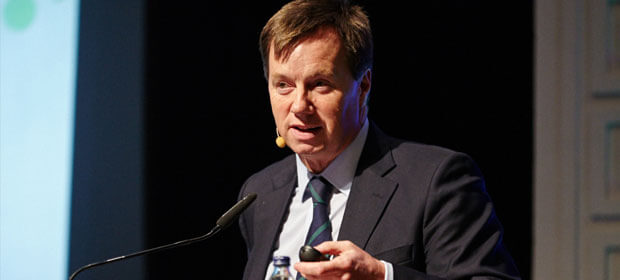The main message that came back to him from patients was the importance of the way they were treated, the way they were heard and the way staff related to them and their families, Mr. Liam Woods, Interim HSE National Director of Acute Services told the Conference.

He said improving the patient experience at the point of care made a real difference whether the treatments they received cured them or not.
With the emphasis in the acute care sector on Hospital Groups it was vital that policy makers and managers remembered that the focus of change must be directed at the point of delivery. Patients were looking for the right care in the right place in the right way for them when it was required.
He cited a service which had been introduced in the Sligo Leitrim area where about €40,000 was spent on maintaining 30 people between the ages of 86 and 101 at home, a service which would have cost about €3 million through the Fair Deal scheme over two years.
Research showed that over 90% of an organisation’s culture was invisible, even to its members. Research would also indicate there was a strong correlation between staff engagement and patient experience.
When the HSE talked to its own staff through the 2014 employee survey only 7.8 per cent of staff responded.
We want to take a national view so that the experience patients are having is informing what we are doing.
Just over half were satisfied in their job at present, the vast majority felt that their role made a difference to patients/clients and 83 per cent claimed to go beyond what was required in their job for the health services to succeed. Levels of advocacy for both the health service as an employer and for its standard of care were below benchmark levels.
Only 9% strongly agreed that if a friend or relative needed treatment they would be happy with the standard of care provided by the health services, while a further 34% agreed.
Mr. Woods said it had to be a matter of concern that only 37% would recommend the health service as an employer to a friend or family member.
Nineteen per cent of those who responded thought the health services’ overall strategy was heading in the right direction, 33% thought it was heading in the wrong direction and 49% didn’t know the strategy well enough to say.
“Both as a national leadership team and leaders in the healthcare environment that must give us pause for thought.”
Mr. Woods said the stress levels identified in the survey (56% with high or extremely high levels) provided managers with a challenge.
The priority areas identified by staff were to address uncertainty, reconnect with leadership, improve poor advocacy, enhance communications, demonstrate staff value, maximise potential and recognise diversity.
There is strong evidence to suggest that a highly engaged employee cared more for the success of the organisation, cared and worked harder for patients and this all led to improved experience and better outcome for patients
“It is my intention that we would focus on employee engagement in the hospital environment. We have a lot of work to do to develop an approach to working together that will work for patients. We will have to measure patient experience. By next year we will be carrying out annual surveys in terms of patient experiences, probably under the auspices of the Department and HIQA.”
Mr. Woods said that he thought the HSE also needed to adapt very quickly to the use of social media, although there were privacy concerns which had to be addressed.
“We are investing in engaging with patient experience. We want to take a national view so that the experience patients are having is informing what we are doing.”

